How would one decide, if making this from scratch, to use 4kΩ, 1.6kΩ,
and 130Ω resistors?
The resistance values determine how much current can flow in the associated parts of the gate circuit. This then determines the input and output currents and operating speed of the gate.
R1 limits the current sourced by an input when pulled low. The previous gate must have enough strength to sink at least this much current (preferably a lot more to get a reasonable fanout). When all inputs are high R1 supplies current to the Base of Q2. This current must be sufficient to tun Q2 fully on.
R2 sets the current supplied to the Base of Q4 when Q2 is turned on, and also limits the current going into the Base of Q3 when Q2 is off.
R3 limits the current that can be drawn from the output when high.
R4 shunts some current away from Q4's Base to ensure that it turns off quickly when Q2 turns off.
Once you have chosen the desired input and output currents, the required resistor values can easily be calculated using Ohm's law and transistor characteristics (Vbe, Hfe etc.). However (as you might suspect) the values interact to some extent.
Choosing a higher value of R1 to get lower input current will require that the other resistances also be higher, so the maximum output current will be lower. With smaller currents flowing the internal parasitic capacitances of the transistors will take longer to charge and discharge, so the gate will have longer delays and a lower maximum operating speed.
